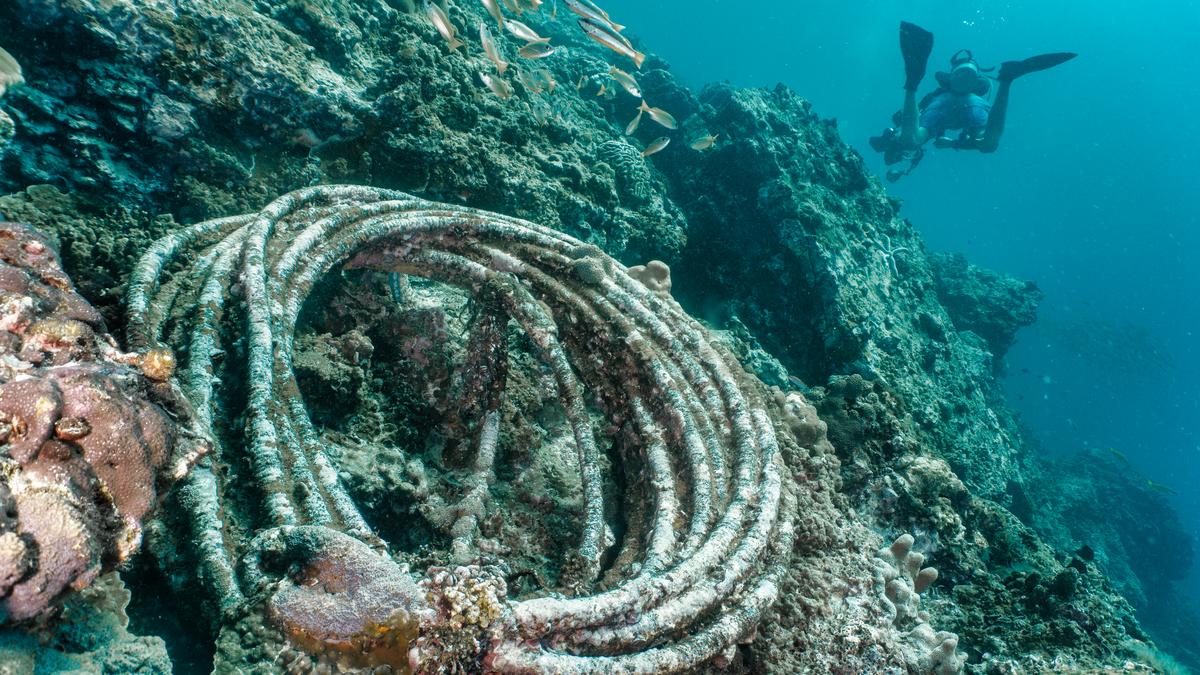The Ministry of Earth Sciences (MoES), through the National Centre for Coastal Research (NCCR), conducted field surveys along India’s coastline between 2022 and 2025 to assess microplastic and marine debris levels. Image for representation.
| Photo Credit: Getty Images/iStockphoto
The major sources of ‘microplastic’ pollution along India’s coasts are “riverine inputs” and abandoned, lost, and discarded fishing gear, Minister Jitendra Singh said in a written response to a query in the Lok Sabha on Wednesday (August 6, 2025).
The Ministry of Earth Sciences (MoES), through the National Centre for Coastal Research (NCCR), conducted field surveys along India’s coastline between 2022 and 2025 to assess microplastic and marine debris levels. Assessment of microplastics in both water and sediment has been carried out along the east and west coasts of India. On the west coast, 19 transects were surveyed from Porbandar (Gujarat) to Kanyakumari (Tamil Nadu), while on the east coast, around 25 transects were sampled from Puri (Odisha) to Thoothukudi (Tamil Nadu). The findings indicated that the predominant sources of microplastic pollution are riverine inputs and abandoned, lost, and discarded fishing gear (ALDFG), he said in his response.
Microplastics are tiny plastic particles, typically ranging in size from 1 micrometre (µm) to 5 millimetres (mm). They can be either primary microplastics, manufactured at that size (like microbeads in cosmetics), or secondary microplastics, formed from the breakdown of larger plastic items. The major concern for microplastics is that they are being increasingly linked to tumours, as well as claimed to be poisonous to marine and aquatic life.
Research groups are investigating the presence of microplastics in a wide range of products. India’s food regulator, Food Safety and Standards Authority of India (FSSAI), commissioned a project last year to assess microplastic contamination in food products and develop methods for its detection amid growing concern about microplastic contamination in food. Environmental research organisation Toxics Link tested 10 types of salt that claimed to reveal the presence of microplastics in all salt and sugar samples, in various forms, including fibre, pellets, films and fragments.
Published – August 06, 2025 09:05 pm IST
